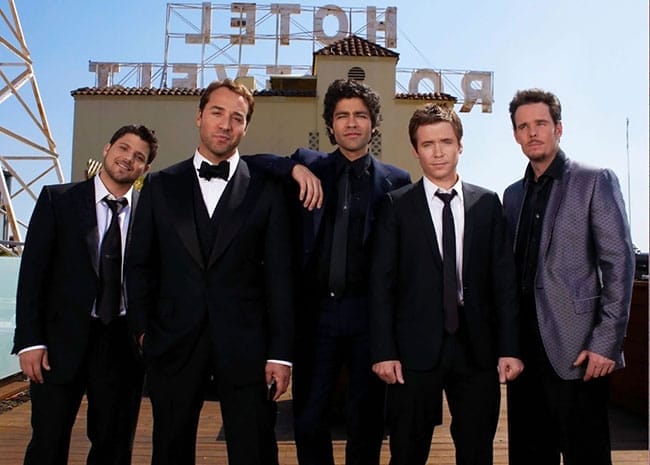After working on cruise ships for almost seven years, it was time to return to America and “real life.” I could have lived anywhere. I chose to live in Los Angeles because of my connections. I went to high school there, my parents are there, I love the weather. My dad has always said, “It is not what you know but who you know.” It turns out that advice works for picking where to live, what to do—and how to use social media.
Social media has saturated all the strands of our existence over the last 11 years. It is now part of our lexicon. We say, “Let me Google that.” We see television shows promoting hashtags at the bottom of the screen begging for engagement. Given the omnipresence of the tools of technology, brands need to be clear on how to best engage their consumers.
That’s a big “how.” Should brands focus on search engine marketing and optimization? Email? Definitely social media, right? Perhaps not, says Nate Elliot, vice president and principal analyst at Forrester. “Social media is not properly understood or measured. Social in comparison to search is less useful and generates less revenue. Excusing social as a young channel doesn’t make sense anymore,” he said.
Why? Social media is too big now to get wrong.
According to Elliot, almost 100 percent of marketers used social media last year and $7.3 billion was spent on social media in the U.S. He projects that number will grow to $9.7 billion this year, with 83 percent of social marketing spending goes toward ads (as opposed to agency fees and other costs).
Elliot states that social media is nowhere near realizing its potential. Marketers and brands include their top fans as ambassadors and harness social media word-of-mouth to share information about new items, sales and extra options. Brands need to understand when and how their customers are engaging and if social media is important to them. Determining your objectives is the first and most important step. Are you trying to create awareness? Increase sales? Engender loyalty? Each of these goals will mean you need a different strategy to achieve them. Only after you have assessed your assets, strengths, objectives and strategy can you turn to technology.
Starting with picking a social media channel is “asking the wrong question first,” Elliott told me. “It is not about technology and channels, it is about building relationships with people. Social was supposed to be about interaction, not about buying ads on Twitter chats.”
After interviewing Elliott, I was able to speak in person with Wheels Up CEO Kenny Dichter and on the phone with serial entrepreneur, J.R. Johnson. Both of these men exemplify what I learned at home and what Elliott has been researching. Building relationships is the most important thing to focus on to achieve business goals.

The author with Wheels Up CEO Kenny Dichter
Wheels Up was featured in the Entourage movie, just as his previous company, Marquis Jet, was seen in the Entourage television show due to Dichter’s close friendship with the production team. Dichter shared that a key to his success comes from “hiring passionate talented people that are smarter than you.” But a closer look reveals that many on his team have been with him for decades and have rejoined in several companies due to their relationships with him and others on his team.
The way Wheels Up shares in social media is an extension of his personal philosophy to care about people and to build community. As most people are on the ground more than flying in the air, they have created Wheels Down events so that some of the #WheelsUp8760 experience (based on the number of hours in a year) can be continued together.
His choice to partner with Triple Crown winner American Pharaoh was based on evaluating risk and reward and years of experience. He recommends that all marketing directors “leave some opportunistic dollars in the budget so when a good idea appears you can take advantage in the moment.” Due to Dichter’s vast network and thriving relationships, he got a call at 6:30am one morning that led to the latest media partnership that has been well worth its investment.
How can your brand leverage relationships to thrive among social strands and styles? J.R. Johnson is a veteran of the travel industry who founded the websites Virtual Tourist, Lunch and Trippy, the latter which was listed in Business Insider May 2015 as one of the “25 hot Los Angeles startups you need to watch.”
Johnson told me that the bigger point about social media is that people desire unique experiences. They do not want cookie cutter franchise consistency. “Hotel chains are being outmaneuvered by the experiences available on Airbnb.” Consumers want something special and they are “drowning in reviews.” The next generation user experience is to have content with context.
The bigger picture is not which social media channel your company is on but rather whether your company has something to say. Can consumers find the solutions and experiences they desire from your brand? People want to participate and belong and find others who “travel like us.” For brands or people not sure how to get started or what to do next, Johnson recommends trying out Airbnb. Better yet, he told me, “Ask a question on Trippy or answer a few questions on Trippy. You will feel smart and helpful.”
People want to participate and by giving them an opportunity, your brand can host user-generated content with a purpose.
Johnson explained: “I have never had the opportunity to help an old lady walk across the street like a boy scout, but I can answer a question and feel good about myself. I can participate and feel good about my hometown.”
Social media tells a story and builds a community, especially when you know who makes up that community.

























